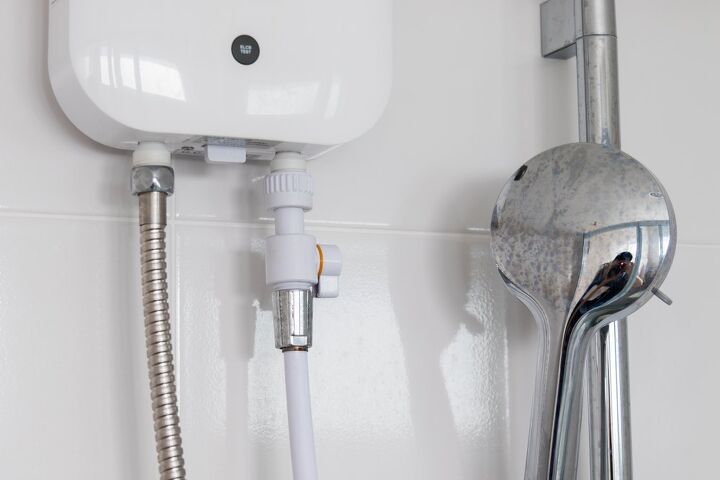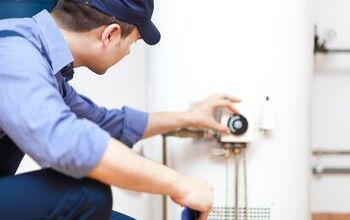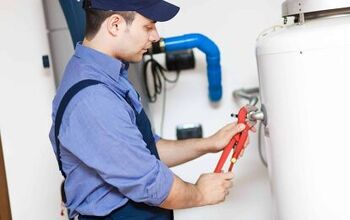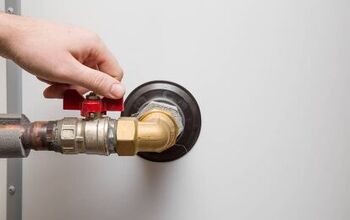Rinnai Vs. Takagi: Which Tankless Water Heater Is Better?

Recently I wrote an article comparing Rinnai’s and Navien’s tankless water heaters. Now, I want to pin Rinnai against another brand: Takagi.
While Takagi claims to be the first company to bring tankless technology to North America, most plumbers I work with install Rinnai. In fact, many haven’t even heard of Takagi, and are less likely to put them in a customer’s home.
That being said, Takagi deserves a fair chance. We’ll compare Rinnai’s RUR199iN against Takagi’s T-H3-DV-N. Both are 199,000 BTU water heaters, offer 15-year limited heat exchanger warranties, and can handle multiple showers.
Takagi T-H3-DV-N Overview
Possessing a Uniform Energy Factor (UEF) of .93, this ENERGY STAR®-qualified water heater comes with a commercial-grade copper alloy primary heat exchanger. Like many other tankless systems, Takagi offers a 15-year limited warranty on the heat exchanger and a five-year warranty on parts. It comes with the following safety devices:
- Freeze, overheat, and power surge protection.
- Troubleshooting diagnostic codes.
Delivering 10 gallons per minute of flow, the T-H3-DV-N can run up to three showers in cold climates simultaneously. The unit is AHRI Certified, and has an LEED Rating of 1.5.
In addition, the T-H3-DV-N is probably one of the most affordable units I’ve seen on the market. Supplyhouse.com listed the water heater at $927.77.
T-H3-DV-N Energy Efficiency
A UEF of .93 is one of the best ratings you’re going to get out of any gas-fired water heater, and puts the T-H3-DV-N right up there with Rinnai. The rating was certified by the Air Conditioning, Heating, and Refrigeration Institute (AHRI).
One of the interesting features of this model is its primary heat exchanger. On average, copper’s thermal conductivity is 20 times that of stainless steel. This suggests the T-H3-DV-N would heat water much faster and more efficiently than the RUR199iN, which has a stainless steel heat exchanger.
Still, there’s one potential disadvantage the T-H3-DV-N’s heat exchanger would have in this regard: copper is far less resistant to corrosion.
T-H3-DV-N Reliability
The primary heat exchanger is made of HRS35 commercial-grade copper. Takagi states that this alloy contains “additive elements that make it much stronger and harder than standard C1220 copper used in most other heat exchangers.” Those elements include small amounts of cobalt, tin, zinc, nickel, and phosphorous.
I couldn’t find any other company that uses HRS35 copper for their primary heat exchangers. While I commend Takagi for integrating the alloy into their design, it leaves me with a couple of questions:
- Although the heat exchanger is protected by a 15-year limited warranty, what are the extent of those limitations?
- Does this mean I have to flush out the heat exchanger at least once a year instead of every two years?
One point of reassurance is a condensate trap located above the primary heat exchanger. This ensures the corrosive condensation won’t come into contact with the primary heat exchanger.
As I haven’t installed this system myself, I can’t speak to how the other components stand up to the test of time. The diagram in the installation manual suggests that the Takagi has a minimal design, which is a welcome point for service.
T-H3-DV-N Performance
If the T-H3-DV-N can handle three showers running simultaneously (assuming a ground water temperature of 40° Fahrenheit), that’s not bad. Again, I’ve personally not seen a T-H3-DV-N installed in the field (or any Takagi, for that matter), so I can’t make a personal testament to its performance.
Thankfully, we have Amazon for that, where it garnered 4.2 out of 5 stars. The only common complaint I found among homeowners was an ignition failure. Either the high-limit switch or the ignitor had to be replaced in a couple of instances. What’s concerning is that these issues occurred within 20 months of installation.
T-H3-DV-N Ease Of Installation And Service
All-in-all Takagi’s installation seems pretty straightforward. From what I’ve seen in the manual, the T-H3-DV-N provides easy connection to all ports: the gas valve, hot and cold water tappings, and condensate drain port don’t seem to be on top of each other. That goes a long way.
The T-H3-DV-N does specify a minimum 3” vent pipe of up to 70’. This assumes that you have a straight shot from the intake and exhaust port to the outdoors. That never happens. For example, if I have to use just 4 fittings to vent the appliance, I can only use 3” pipe up to 50’. Otherwise, I have to increase to 4”.
Rinnai RUR199iN Overview
Possessing a UEF of .93, the Rinnai RUR199iN comes with a 15-year warranty on its stainless steel heat exchanger. It also covers other parts for up to five years. Unlike Takagi, Rinnai also offers a 1-year warranty for labor.
One thing you’ll notice is that Takagi has a huge price advantage over the RUR199iN. While I couldn’t find it listed on Supplyhouse.com, Big Frog Supply offers the unit at $2,178.75. That’s a $1,100 difference between the two.
That being said, “you get what you pay for.” Out of the three brands of tankless water heaters I install (Navien and Bosch being the other two), I’ve had fewer issues with the Rinnai. Over the past year, I haven’t had any.
RUR199iN Energy Efficiency
With regard to energy efficiency, the RUR199iN and the T-H3-DV-N are neck-and-neck. Both have a .UEF of .93, if we go by Takagi’s AHRI certification.
Although I couldn’t find an Energy Guide sticker for the Takagi, I did find one for the Rinnai. According to that sticker, homeowners can expect to spend $201 a year running the unit. Not bad at all, when you stack it against other tankless brands which cost around $400 to run.
RUR199iN Reliability
To reiterate my earlier comment: I rarely get complaints about the RUR199iN. In fact, I can only think of one instance in which the unit failed to turn on, but that was due to an issue with the customer’s propane tank.
If we’re going to compare apples to apples, the RUR199iN garnered a 4.4 out of 5 stars from Amazon customers. Homeowners often complain about Rinnai’s mobile app, control r™:
- You can’t control the recirculation, economy, or comfort settings through the app.
- If the power goes out, the water heater’s output temperature will reset to its factory settings.
On the technical side of things, Rinnai has more than a few bugs to fix. That being said, the water heater itself is one of the most durable I’ve installed.
RUR199iN Performance
Referencing Rinnai’s ground water temperature map, the RUR199iN has somewhat of a slight edge over the Takagi. At 35° F, the water heater can run three showers simultaneously. Takagi doesn’t even list its performance at 35° F. What’s more, the RUR199iN can deliver these showers at 4.4 gallons per minute (GPM)
Those living in warmer climates, with a ground-water temperature of 72° F, can enjoy six showers simultaneously at 7.9 GPM.
As noted in my previous article, recognize that the RUR199iN (like any tankless system) will deliver a “cold water sandwich.” This is because the system holds a small amount of cold water in the water heater when it isn’t running. When you turn on the pressure to your faucet, the cold water leaves the heat exchanger and goes out your hot side.
RUR199iN Ease Of Installation
My only complaint about the RUR199iN is that the cold and hot water tappings aren’t located on top of the unit. However, I can’t whine too much – Bosch’s tankless system is the only one that has this feature.
Other than that, the RUR199iN is a breeze to install. I can use 2” piping for my venting, the temperature and pressure relief valve has its own port, and the system is easy to get up and running.
Related Questions
Is A Tankless Water Heater Better Than A Tank-Type?
This really all comes down to personal preference, but the market is trending toward tankless systems. Homebuyers either look for tankless or hybrid-electric tanks when shopping for new homes.Some of the old-school plumbers will say that tank-type water heaters will last longer than tankless units. That was true 20 years ago, but not today. Unfortunately, they don’t make them like they used to. I can say that indirect-heated tank-type water heaters are the most reliable. HTP offers lifetime warranty on their indirect products.Tankless systems do have the following advantages:
- You can store them in tight basements, given that they take fresh air directly from outside. Gas-fired tank-type water heaters need plenty of make-up air, and not all basements can offer that.
- They do provide “endless” hot water. The only way it would end is if someone turns the water or gas off to the unit.
The Final Verdict
If I were to choose between these two units, I’d stick with the Rinnai – simply because I’ve installed the system before and think it’s reliable.
That being said, I’m not one to venture away from a brand I trust to one with which I have no experience. If you’re interested in the Takagi, find a licensed plumber who has experience installing them. They’ll have a better idea of its in-field capabilities than myself.

We are a team of passionate homeowners, home improvement pros, and DIY enthusiasts who enjoy sharing home improvement, housekeeping, decorating, and more with other homeowners! Whether you're looking for a step-by-step guide on fixing an appliance or the cost of installing a fence, we've here to help.
More by Upgraded Home Team



























